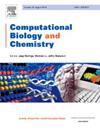A multi-class fundus disease classification system based on an adaptive scale discriminator and hybrid loss
IF 2.6
4区 生物学
Q2 BIOLOGY
引用次数: 0
Abstract
Fundus images are crucial in the observation and detection of ophthalmic diseases. However, detecting multiple ophthalmic diseases from fundus images using deep learning techniques is a complex and challenging task One challenge is the complexity of fundus disease structures, which leads to low detection accuracy. Another challenge is the class imbalance problem common in multi-label image classification, which increases the difficulty of algorithm training and evaluation. To address these issues, this study leverages deep learning to propose an ophthalmic disease classification system. We first employ ResNet50 as the backbone network to extract image features, and then use our designed multi-dimensional attention module and adaptive scale discriminator to enhance the network's ability to detect disease features. During training, we innovatively propose a hybrid loss function method to improve the detection capability on imbalanced data. Finally, we conducted experiments on the ODRI-5K dataset with the proposed classification system. In the test set, our method achieved an AUC of 98.53 and an F1-score of 89.73. This result fully demonstrates the excellent disease classification capability of our method. In summary, the multi-label fundus image disease classification system we proposed exhibits outstanding recognition capability, providing an effective solution for the diagnosis of multi-label fundus image diseases.
基于自适应尺度判别器和混合损失的多级眼底疾病分类系统
眼底图像对于观察和检测眼科疾病至关重要。然而,利用深度学习技术从眼底图像中检测多种眼科疾病是一项复杂而具有挑战性的任务。 一个挑战是眼底疾病结构的复杂性导致检测准确率较低。另一个挑战是多标签图像分类中常见的类不平衡问题,这增加了算法训练和评估的难度。为了解决这些问题,本研究利用深度学习提出了眼科疾病分类系统。我们首先采用 ResNet50 作为骨干网络来提取图像特征,然后利用我们设计的多维注意力模块和自适应尺度判别器来增强网络检测疾病特征的能力。在训练过程中,我们创新性地提出了一种混合损失函数方法,以提高对不平衡数据的检测能力。最后,我们利用所提出的分类系统在 ODRI-5K 数据集上进行了实验。在测试集中,我们的方法取得了 98.53 的 AUC 和 89.73 的 F1 分数。这一结果充分证明了我们的方法具有出色的疾病分类能力。总之,我们提出的多标签眼底图像疾病分类系统具有出色的识别能力,为多标签眼底图像疾病诊断提供了有效的解决方案。
本文章由计算机程序翻译,如有差异,请以英文原文为准。
求助全文
约1分钟内获得全文
求助全文
来源期刊

Computational Biology and Chemistry
生物-计算机:跨学科应用
CiteScore
6.10
自引率
3.20%
发文量
142
审稿时长
24 days
期刊介绍:
Computational Biology and Chemistry publishes original research papers and review articles in all areas of computational life sciences. High quality research contributions with a major computational component in the areas of nucleic acid and protein sequence research, molecular evolution, molecular genetics (functional genomics and proteomics), theory and practice of either biology-specific or chemical-biology-specific modeling, and structural biology of nucleic acids and proteins are particularly welcome. Exceptionally high quality research work in bioinformatics, systems biology, ecology, computational pharmacology, metabolism, biomedical engineering, epidemiology, and statistical genetics will also be considered.
Given their inherent uncertainty, protein modeling and molecular docking studies should be thoroughly validated. In the absence of experimental results for validation, the use of molecular dynamics simulations along with detailed free energy calculations, for example, should be used as complementary techniques to support the major conclusions. Submissions of premature modeling exercises without additional biological insights will not be considered.
Review articles will generally be commissioned by the editors and should not be submitted to the journal without explicit invitation. However prospective authors are welcome to send a brief (one to three pages) synopsis, which will be evaluated by the editors.
 求助内容:
求助内容: 应助结果提醒方式:
应助结果提醒方式:


